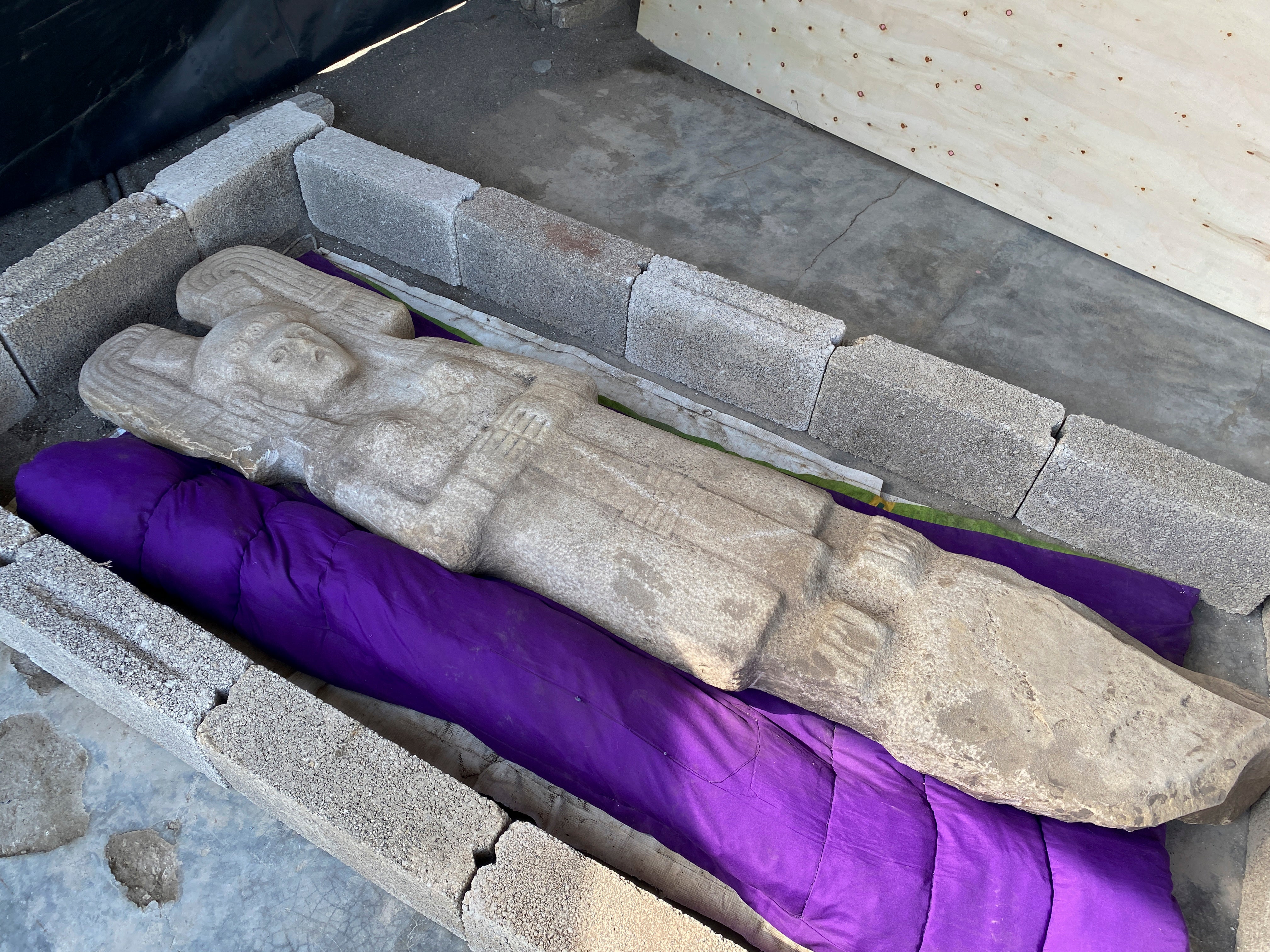Mexican farmers find rare female statue in citrus grove
Farmers digging in a citrus grove near Mexico's Gulf coast have found a striking, six-foot-tall statue of a female figure who may represent an elite woman rather than a goddess, or some mixture of the two

Your support helps us to tell the story
From reproductive rights to climate change to Big Tech, The Independent is on the ground when the story is developing. Whether it's investigating the financials of Elon Musk's pro-Trump PAC or producing our latest documentary, 'The A Word', which shines a light on the American women fighting for reproductive rights, we know how important it is to parse out the facts from the messaging.
At such a critical moment in US history, we need reporters on the ground. Your donation allows us to keep sending journalists to speak to both sides of the story.
The Independent is trusted by Americans across the entire political spectrum. And unlike many other quality news outlets, we choose not to lock Americans out of our reporting and analysis with paywalls. We believe quality journalism should be available to everyone, paid for by those who can afford it.
Your support makes all the difference.Farmers digging in a citrus grove near Mexico’s Gulf coast have found a striking six-foot-tall statue of a female figure who may represent an elite woman rather than a goddess, or some mixture of the two, experts said Friday.
The National Institute of Anthropology and History said it was the first such statue found in a region known as the Huasteca.
The carved woman has an elaborate hairpiece and marks of status, and may date to around 1450 to 1521, the institute said. While the site where it was found is nearer to the pre-Hispanic ruin site of El Tajín, the statue shows some influences of the Aztecs.
Farmers digging in the grove found it on New Year's Day and quickly reported it to authorities. The area where it was found was not previously known to be an archeological site, and the stone statue may have been moved from some unknown original site.
Just who the open-mouthed, wide-eyed statue depicts remains something of a mystery.
Institute archaeologist María Eugenia Maldonado Vite wrote that “this could be a ruler, based on her posture and attire, more than a goddess.”
Maldonado added it could be “a late fusion between the Teem goddesses and women of high political or social status in the Huasteca.” Those goddesses were part of a fertility cult.
Monuments to high-status or ruling females are not unknown in Mexico.
In 1994 in the Mayan ruin site of Palenque, archaeologists found the tomb of a woman dubbed The Red Queen because of the red pigment covering her tomb. But it has never been firmly established that the woman, whose tomb dates from between 600 and 700 A.D., was a ruler of Palenque.